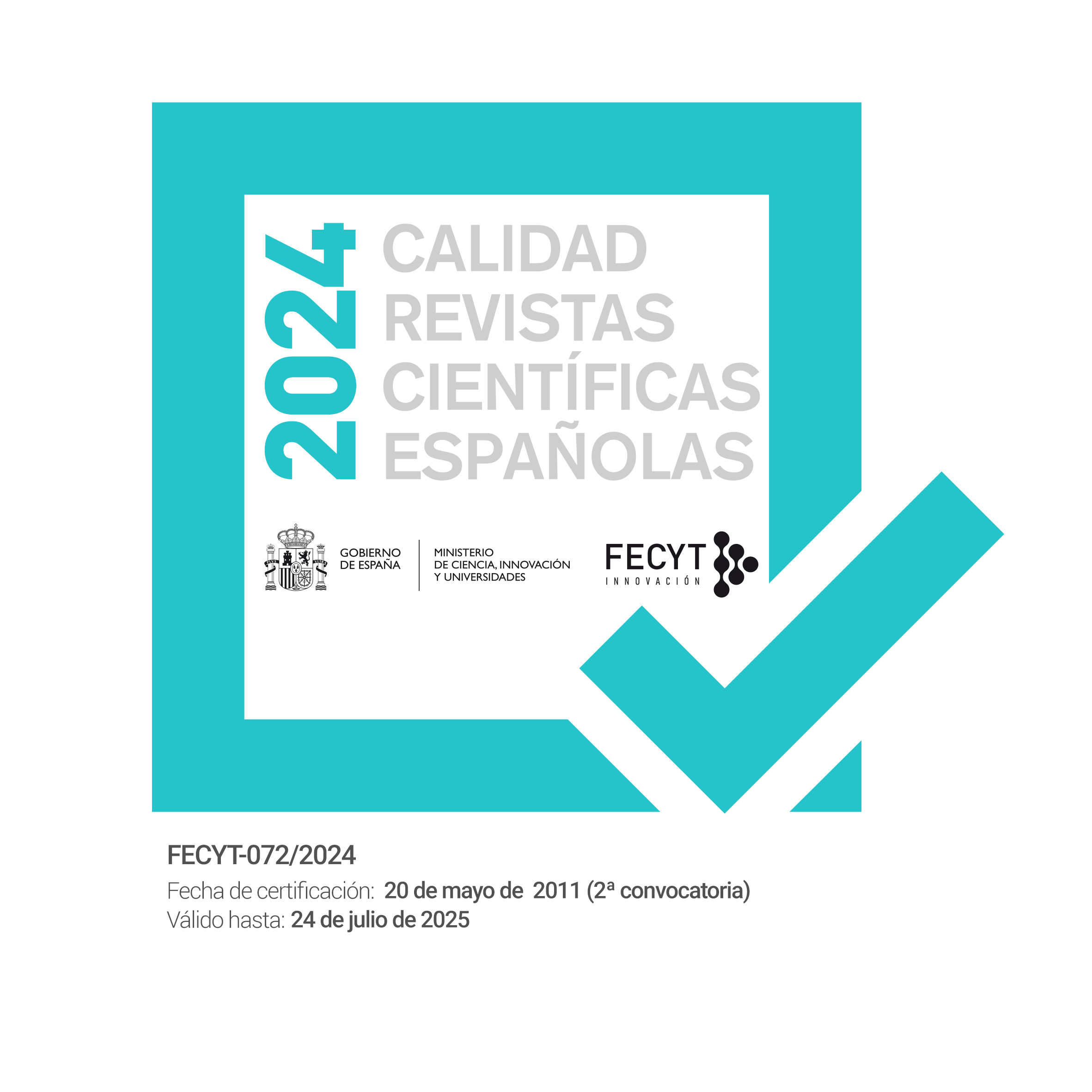Identificación individual fotográfica basada en el patrón de coloración único del tórax de Acherontia atropos (Linnaeus, 1758) (Lepidoptera: Sphingidae)
DOI:
https://doi.org/10.57065/shilap.181Palabras clave:
Lepidoptera, Sphingidae, Acherontia atropos, técnicas de marcaje individual, marcaje natural, APHIS, Islas Baleares, EspañaResumen
Las marcas naturales se utilizan cada vez más como herramienta de identificación individual. Una de las técnicas más utilizadas con las marcas naturales y como herramienta de reconocimiento individual, es la fotoidentificación. La fotoidentificación es una alternativa no invasiva al marcaje tradicional, que permite el reconocimiento individual de especies a través del tiempo y espacio. En este estudio, el software APHIS (Automatic Photo Identification Suite) ha sido evaluado como software capaz de identificar individuos de Acherontia atropos (Linnaeus, 1758). Se probaron los procedimientos SPM (Spot Pattern Matching) e ITM (Image Template Matching) logrando el 100% de éxito de individuos reconocidos. Así, por primera vez en una especie de Sphingidae se demuestra que el patrón de color de la parte dorsal del tórax de A. atropos constituye una marca natural adecuada para el reconocimiento individual.
Descargas
Estadísticas globales ℹ️
|
483
Visualizaciones
|
314
Descargas
|
|
797
Total
|
|
Citas
BOLGER, D. T., MORRISON, T. A., VANCE, B., LEE, D. & FARID, H., 2012.– A computer-assisted system for photographic mark-recapture analysis.– Mollecular Ecology and Evolution, 3: 813-822. DOI: https://doi.org/10.1111/j.2041-210X.2012.00212.x
BROWER, L. P., 1962.– Evidence for interspecific competition in natural populations of the monarch and queen butterflies, Danaus plexippus and D. gilippus berenice in South Central Florida.– Ecology, 43: 549-552. DOI: https://doi.org/10.2307/1933390
BRUGGER, A., 1946.– The death head moth.– Gleaning in Bee Culture, 74: 602-603.
CAMERON, P. J., WALKER, G. P., PENNY, G. M. & WIGLEY, P. J., 2002.– Movement of potato tuberworm (Lepidoptera: Gelechiidae) within and between crops, and some comparisons with diamondback moth (Lepidoptera: Plutellidae).– Environmental Entomology, 31: 65-75. DOI: https://doi.org/10.1603/0046-225X-31.1.65
CALVO, B. & FURNESS, R. W., 1992.– A review of the use and the effects of marks and devices on birds.– Ringing and Migration, 13: 129-151. DOI: https://doi.org/10.1080/03078698.1992.9674036
CHIM, C. K. & TAN, K. S., 2012.– Recognition of individual knobby sea stars Protoreaster nodosus (L., 1758) using aboral surface characteristics.– Journal of Experimental Marine Biology and Ecology, 430: 48-55. DOI: https://doi.org/10.1016/j.jembe.2012.06.028
DELANY, M. J., 1978.– Introduction: marking animals for research: 1-10 pp.– In B. STONEHOUSE (Ed.). Animal Marking. Recognition Marking of Animals in Research: 268 pp. Palgrave, London. DOI: https://doi.org/10.1007/978-1-349-03711-7_1
DENIS, D. & CRUZ-FLORES, D. D., 2017.– Algoritmo para la fotoidentificación individual en lepidópteros diurnos cubanos con patrones de manchas.– Poeyana, 505: 1-14.
DÍAZ-CALAFAT, J., RIBAS-MARQUÉS, E., JAUME-RAMIS, S., MARTÍNEZ-NÚÑEZ, S., SHARAPOVA, A. & PINYA, S., 2018.– Individual unique colour patterns of the pronotum of Rhynchophorus ferrugineus (Coleoptera: Curculionidae) allow for photographic identification methods (PIM).– Journal of Asia-Pacific Entomology, 21: 519-526. DOI: https://doi.org/10.1016/j.aspen.2018.03.002
DUNBAR, S. G., ITO, H. E., BAHJRI, K., DEHOM, S. & SALINAS, L., 2014.– Recognition of juvenile hawksbills Eretmochelys imbricata through face scale digitization and automated searching.– Endangered Species Research, 26: 137-146. DOI: https://doi.org/10.3354/esr00637
FRISCH, A. J. & HOBBS, J. P. A., 2007.– Photographic identification based on unique, polymorphic colour patterns: a novel method for tracking a marine crustacean.– Journal of Experimental Marine Biology and Ecology, 351: 294-299. DOI: https://doi.org/10.1016/j.jembe.2007.07.008
GALL, L. F., 1984.– The effects of capturing and marking on subsequent activity in Boloria acrocnema (Lepidoptera: Nymphalidae), with a comparison of different numerical models that estimate population size.– Biological Conservation, 28: 139-154. DOI: https://doi.org/10.1016/0006-3207(84)90032-6
HAMIDA, B. B., 1999.– Enemies of bees.– In M. E. COLIN, B. V. BALL & M. KILANI (Ed.).– Bee Disease Diagnosis: 147-165. Ed. CICHEAM, Zaragoza.
HIGGINS, B. M., ROBERTSON, B. A. & WILLIAMS, T. D., 1997.– Manual for mass wire tagging of hatchling sea turtles and the detection of internal wire tags. NOAA Technical Memorandum NMFS-SEFSC-402: IX + 66 pp. U. S. Department of Commerce, Galveston, Texas.
HUFFARD, C. L., CALDWELL, R. L., DELOACH, N., GENTRY, D. W., HUMANN, P., MACDONALD, B., MOORE, B., ROSS, R., UNO, T. & WONG, S., 2008.– Individually unique body colour patterns in octopus (Wunderpus photogenicus) allow for photoidentification.– Plos One, 3: e3732. DOI: https://doi.org/10.1371/journal.pone.0003732
KITCHING, I. J., 2021.– Sphingidae Taxonomic Inventory. Available from http://sphingidae.myspecies.info/ (accessed on 29 March 2021).
KNIGHT, A., BROWER, L. P. & WILLIAMS, E. H., 1999.– Spring remigration of the monarch butterfly, Danaus plexippus (Lepidoptera: Nymphalidae) in north-central Florida: estimating population parameters using markrecapture.– Biological Journal of Linnaean Society, 68: 531-556. DOI: https://doi.org/10.1111/j.1095-8312.1999.tb01187.x
KOHLER, N. E. & TURNER, P. A., 2001.– Shark tagging: a review of conventional methods and studies.– Environmental Biology of Fishes, 60: 191-224. DOI: https://doi.org/10.1007/978-94-017-3245-1_12
LANGTIMM, C. A., BECK, C. A., EDWARDS, H. H., FICK-CHILD, K. J., ACKERMAN, B. B., BARTON, S. L. & HARTLEY, W. C., 2004.– Survival estimates for Florida manatees from the photo-identification of individuals.– Marine Mammalogy Science, 20: 438-463. DOI: https://doi.org/10.1111/j.1748-7692.2004.tb01171.x
MANN, J., CONNOR, R. C., TYACK, P. L. & WHITEHEAD, H., 2000.– Cetacean societies: field studies of dolphins and whales: XIV + 111 pp. University of Chicago Press, Chicago.
MATTHIOPOULOS, J., MCCONNELL, B., DUCK, C. & FEDAK, M., 2004.– Using satellite telemetry and aerial counts to estimate space use by grey seals around the British Isles.– Journal of Applied Ecology, 41: 476-491. DOI: https://doi.org/10.1111/j.0021-8901.2004.00911.x
MORTON, A. C., 1982.– The effects of marking and capture on recapture frequencies of butterflies.– Oecologia, 53: 105-110. DOI: https://doi.org/10.1007/BF00377143
MOYA, Ó., MANSILLA, P. L., MADRAZO, S., IGUAL, J. M., ROTGER, A., ROMANO, A. & TAVECCHIA, G., 2015.– APHIS: a new software for photo-matching in ecological studies.– Ecological Informatics, 27: 64-70. DOI: https://doi.org/10.1016/j.ecoinf.2015.03.003
MURPHY, D. D., 1987.– Are we studying our endangered butterflies to death?.– Journal of Research on the Lepidoptera, 26: 236-239. DOI: https://doi.org/10.5962/p.266718
OOSTHUIZEN, W. C., DE BRUYN, P. J. N., BESTER, M. N. & GIRONDOT, M., 2010.– Cohort and tag-site-specific tag-loss rates in mark-recapture studies: A southern elephant seal cautionary case.– Marine Mammalogy Science, 26: 350-369. DOI: https://doi.org/10.1111/j.1748-7692.2009.00328.x
PATERSON, W. D., REDMAN, P., HIBY, L. A., MOSS, S. E. W., HALL, A. J. & POMEROY, P., 2013.– Pup to adult photo-ID: evidence of pelage stability in grey seals.– Marine Mammalogy Science, 29: E537-E541. DOI: https://doi.org/10.1111/mms.12043
PRIETO, C., TAKEGAMI, C. & RIVERA, J. M., 2005.– Estructura poblacional de Morpho sulkowskyi Kollar, 1850 (Lepidoptera: Nymphalidae) en un sector de la cordillera occidental, departamento del Cauca (Colombia).– Entomotropica, 20: 15-22.
RAJ, L. K., 1998.– Photo-identification of Stichopus mollis.– SPC Beche-de-mer Bulletin, 10: 29-31. DOI: https://doi.org/10.18356/fff851f7-fr
R CORE TEAM., 2017.– R: A language and environment for statistical computing.: R Foundation for Statistical Computing. Vienna.
ROMITI, F., BISSATTINI, A. M., BUONO, V., CIFARELLI, C., DELLA ROCCA, F., ENIANG, E. A., AKANI G. C., LUISELLI, L., SUPERTI, V., CARPANETO, G. M. & VIGNOLI, L., 2017.– Photographic identification method (PIM) using natural body marks: A simple tool to make a long story short.– Zoologischer Anzeiger, 266: 36-147. DOI: https://doi.org/10.1016/j.jcz.2016.11.006
ROSSI DE GASPERIS, S., CARPANETO, G. M., NIGRO, G., ANTONINI, G., CHIARI, S., CINI, A., MANCINI, E., MASON, F., MOSCONI, F., REDOLFI DE ZAN, L., ROVERSI, P. F., SABBATINI-PEVERIERI, G., SOLANO, E. & CAMPANARO, A., 2017.– Computer-aided photographic identification of Rosalia alpina (Coleoptera: Cerambycidae) applied to a mark-recapture study.– Insect Conservation and Biodiversity, 10: 54-63. DOI: https://doi.org/10.1111/icad.12199
SACCHI, R., GALEOTTI, P., FASOLA, M. & SCALI, S., 2007.– The numerical encoding of scale morphology highly improves photographic identification in lizards.– Acta Herpetologica, 1: 1000-1009.
SARWARS, M., 2016.– Insect pests of honey bees and choosing of the right management strategic plan.– International Journal of Entomological Research, 1: 16-22.
SHERLEY, R. B., BURGHARDT, T., BARHAM, P. J., CAMPBELL, N. & CUTHILL, I. C., 2010.– Spotting the difference: towards fully-automated population monitoring of African penguins Spheniscus demersus.– Endangered Species Research, 11: 101-111. DOI: https://doi.org/10.3354/esr00267
SILVY, N. J., LOPEZ, R. R. & PETERSON, M. J., 2012.– Techniques for marking wildlife.– In I. SILVY (Ed.). The wildlife techniques manual: 230-257. The John Hopkins University Press. Baltimore.
SINGER, M. C. & WEDLAKE, P., 1981.– Capture does affect probability of recapture in a butterfly species.– Ecological Entomology, 6: 215-216. DOI: https://doi.org/10.1111/j.1365-2311.1981.tb00609.x
SOUTHWOOD, T. R. E. & HENDERSON, P. A., 2009.– Ecological methods: XV + 111 pp. Ed. Halsted Press. New York.
SPEED, C. W., MEEKAN, M. G. & BRADSHAW, C. J. A., 2007.– Spot the match-wildlife photo-identification using information theory.– Frontiers in Zoology, 4: 1182-1184. DOI: https://doi.org/10.1186/1742-9994-4-2
STEVICK, P. T., PALSBØLL, P. J., SMITH, T. D., BRAVINGTON, M. V. & HAMMOND, P. S., 2001.– Errors in identification using natural markings: rates, sources, and effects on capture recapture estimates of abundance.– Canadian Journal of Aquatic Fish and Aquatic Science, 58: 1861-1870. DOI: https://doi.org/10.1139/f01-131
VAN TIENHOVEN, A. M., DEN HARTOG, J. E., REIJNS, R. A. & PEDDEMORS, V. M., 2007.– A computer-aided program for pattern-matching of natural marks on the spotted raggedtooth shark Carcharias taurus.– Journal of Applied Ecology, 44: 273-280. DOI: https://doi.org/10.1111/j.1365-2664.2006.01273.x
ZAGORINSKII, A. A., GORBUNOV, O. G. & SIDOROV, A. V., 2013.– An experience of rearing some hawk moths (Lepidoptera, Sphingidae) on artificial diets.– Entomological Review, 93: 1107-1115. DOI: https://doi.org/10.1134/S0013873813090029
ZHENG, X., OWEN, M. A., NIE, Y., HU, Y., SWAISGOOD, R. R., YAN, L. & WEI, F., 2016.– Individual identification of wild giant pandas from camera trap photos-a systematic and hierarchical approach.– Journal of Zoology, 300: 247-256. DOI: https://doi.org/10.1111/jzo.12377
Publicado
Cómo citar
Número
Sección
Licencia
Derechos de autor 2022 A. Ruiz de la Hermosa, F. Truyols-Hermosa, S. Pinya

Esta obra está bajo una licencia internacional Creative Commons Atribución 4.0.
El autor retiene sus derechos de marca y patente sobre cualquier proceso o procedimiento dentro del artículo.
El autor retiene el derecho de compartir, distribuir, ejecutar y comunicar públicamente el artículo publicado en SHILAP Revista de lepidopterología, con reconocimiento inicial de su publicación en SHILAP Revista de lepidopterología.
El autor retiene el derecho para hacer una posterior publicación de su trabajo, de utilizar el artículo a publicarlo en un libro, siempre que indique su publicación inicial en SHILAP Revista de lepidopterología.
Cada envío a SHILAP Revista de lepidopterología debe ir acompañado de una aceptación de los derechos de autor y del reconocimiento de autoría. Al aceptarlos, los autores conservan los derechos de autor de su trabajo y aceptan que el artículo, si es aceptado para su publicación por SHILAP Revista de lepidopterología, tendrá una licencia de uso y distribución “Reconocimiento 4.0 Internacional de Creative Commons” (CC BY 4.0), que permite a terceros compartir y adaptar el contenido para cualquier propósito dando el crédito apropiado al trabajo original.
Puede consultar desde aquí la versión informativa y el texto legal de la licencia. La indicación de la licencia CC BY 4.0 debe indicarse expresamente de esta manera cuando sea necesario.
A partir de 2022, el contenido de la versión impresa y digital se encuentra bajo una licencia de uso y distribución “Reconocimiento 4.0 Internacional de Creative Commons” (CC BY 4.0), que permite a terceros compartir y adaptar el contenido para cualquier propósito dando el crédito apropiado al trabajo original.
El contenido anterior de la revista se publicó bajo una licencia tradicional de derechos de autor; sin embargo, el archivo está disponible para acceso gratuito.
Al usar el contenido de SHILAP Revista de lepidopterología publicado antes del año 2022, incluidas figuras, tablas o cualquier otro material en formato impreso o electrónico pertenecen a los autores de los artículos, los autores deben obtener el permiso del titular de los derechos de autor. Las responsabilidades legales, financieras y penales a este respecto pertenecen al autor(es).
En aplicación del Principio de Prioridad del Código Internacional de Nomenclatura Zoologica, no se autoriza el depósito en repositorios, páginas web personales o similares de cualquier otra versión distinta a la publicada por el editor.




























